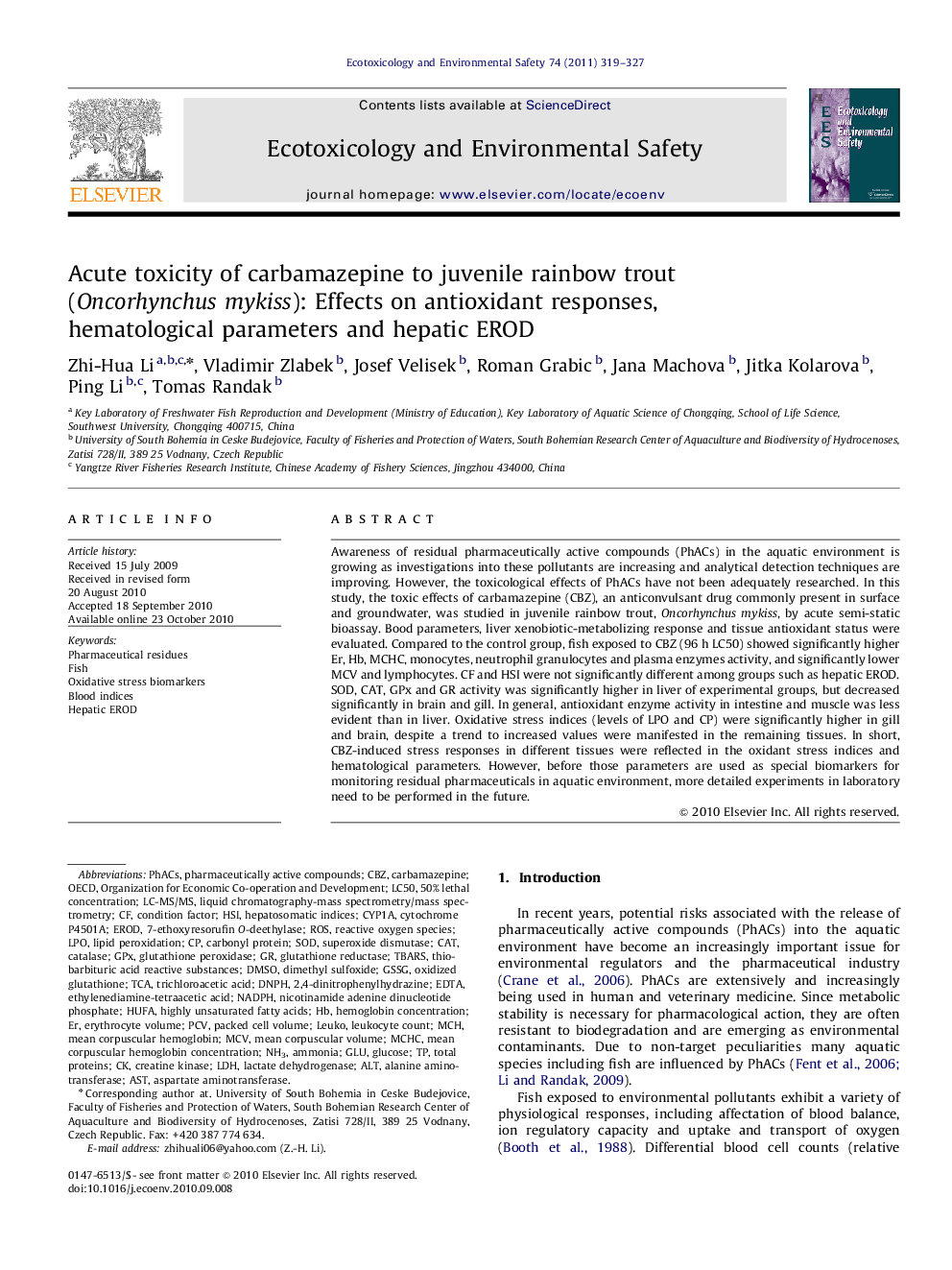| Article ID | Journal | Published Year | Pages | File Type |
|---|---|---|---|---|
| 6312492 | Ecotoxicology and Environmental Safety | 2011 | 9 Pages |
Abstract
Awareness of residual pharmaceutically active compounds (PhACs) in the aquatic environment is growing as investigations into these pollutants are increasing and analytical detection techniques are improving. However, the toxicological effects of PhACs have not been adequately researched. In this study, the toxic effects of carbamazepine (CBZ), an anticonvulsant drug commonly present in surface and groundwater, was studied in juvenile rainbow trout, Oncorhynchus mykiss, by acute semi-static bioassay. Bood parameters, liver xenobiotic-metabolizing response and tissue antioxidant status were evaluated. Compared to the control group, fish exposed to CBZ (96Â h LC50) showed significantly higher Er, Hb, MCHC, monocytes, neutrophil granulocytes and plasma enzymes activity, and significantly lower MCV and lymphocytes. CF and HSI were not significantly different among groups such as hepatic EROD. SOD, CAT, GPx and GR activity was significantly higher in liver of experimental groups, but decreased significantly in brain and gill. In general, antioxidant enzyme activity in intestine and muscle was less evident than in liver. Oxidative stress indices (levels of LPO and CP) were significantly higher in gill and brain, despite a trend to increased values were manifested in the remaining tissues. In short, CBZ-induced stress responses in different tissues were reflected in the oxidant stress indices and hematological parameters. However, before those parameters are used as special biomarkers for monitoring residual pharmaceuticals in aquatic environment, more detailed experiments in laboratory need to be performed in the future.
Keywords
CbzGSSGHSILPOTBARSGPXTCANADPHALTLC50DNPHCATCYP1AERODOECDNH3MCHMCHCMCVPHACSHUFAErythrocyte volumeBlood indices2,4-dinitrophenylhydrazine50% lethal concentration7-ethoxyresorufin O-deethylaseDMSOLC-MS/MSROSASTAlanine aminotransferaseAmmoniaEDTAethylenediamine-tetraacetic acidtrichloroacetic acidHighly unsaturated fatty acidsPharmaceutical residuesOxidative stress biomarkersPharmaceutically active compoundsLeukocyte countPacked cell volumeMean corpuscular volumeDimethyl sulfoxideOrganization for Economic Co-operation and DevelopmentSODSuperoxide dismutaseCytochrome P4501Aliquid chromatography-mass spectrometry/mass spectrometryHemoglobin concentrationCondition factorlactate dehydrogenaseLDHFishmean corpuscular hemoglobinthiobarbituric acid reactive substancesMean corpuscular hemoglobin concentrationnicotinamide adenine dinucleotide phosphatePCV یا Pneumococcal conjugate vaccineLipid peroxidationCarbonyl proteinCatalasecarbamazepineCreatine kinaseTotal proteinsGluoxidized glutathioneglutathione reductaseglutathione peroxidaseGlucoseReactive oxygen species
Related Topics
Life Sciences
Environmental Science
Environmental Chemistry
Authors
Zhi-Hua Li, Vladimir Zlabek, Josef Velisek, Roman Grabic, Jana Machova, Jitka Kolarova, Ping Li, Tomas Randak,
